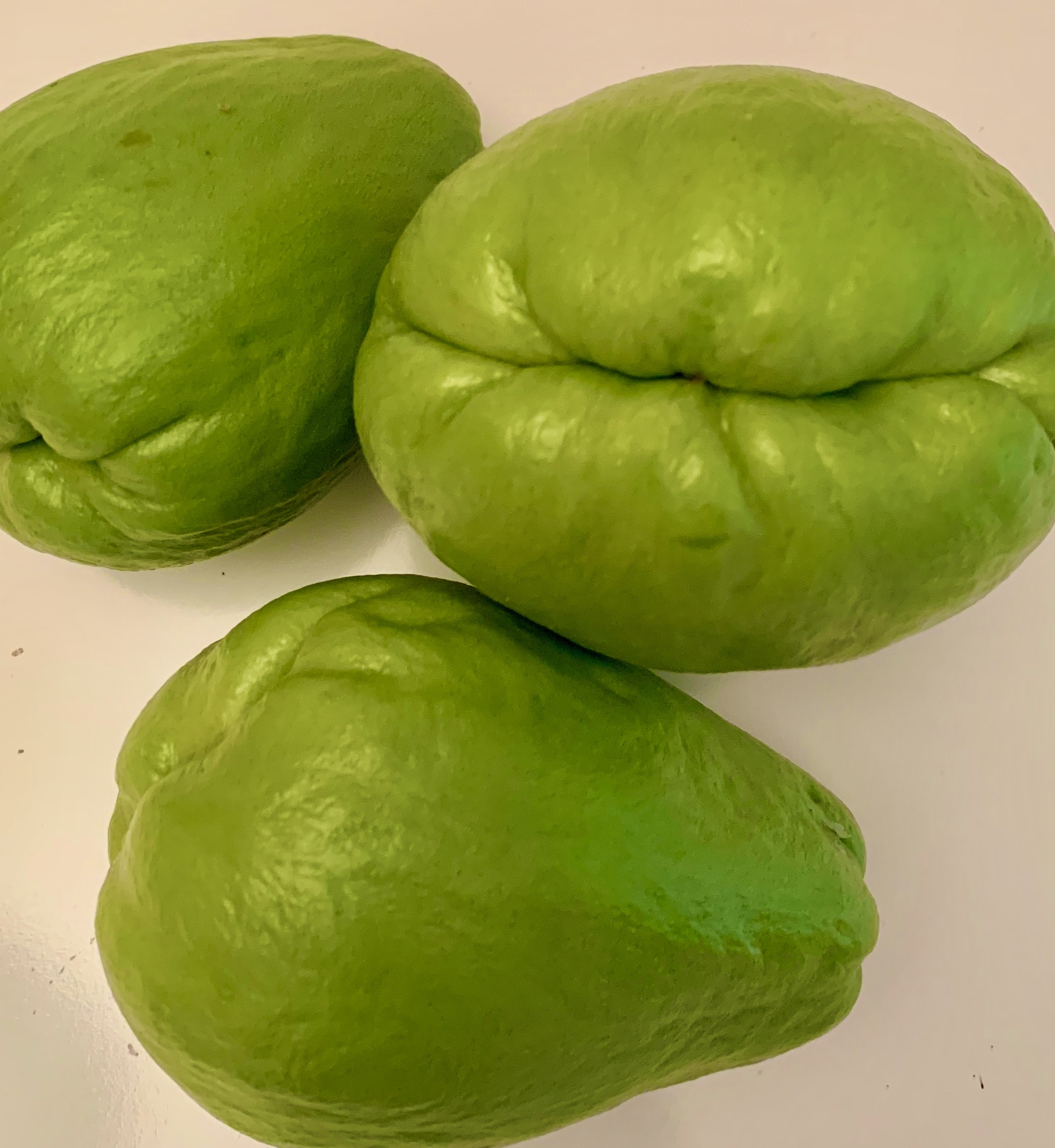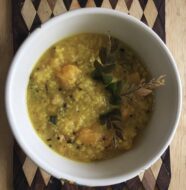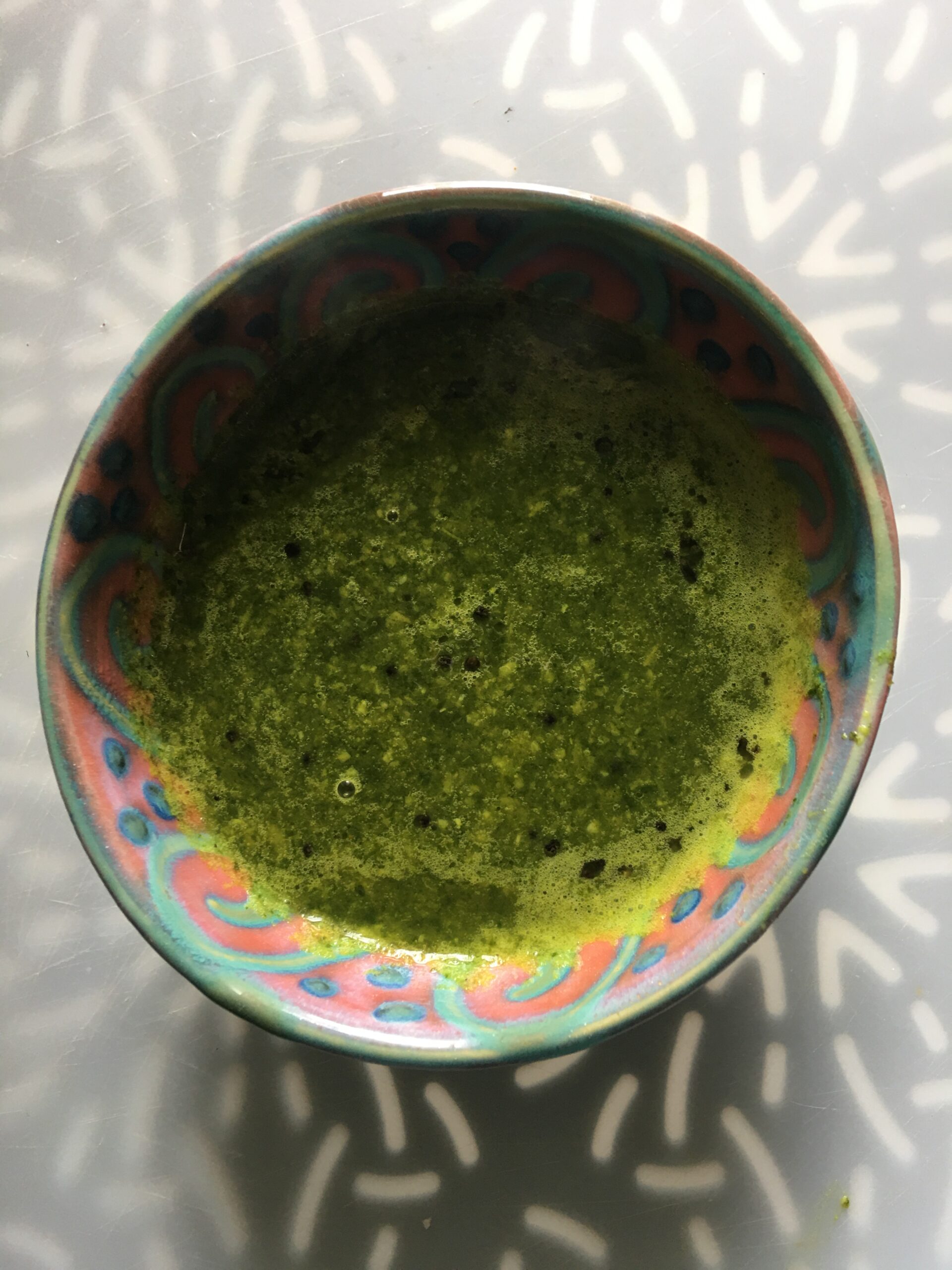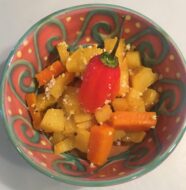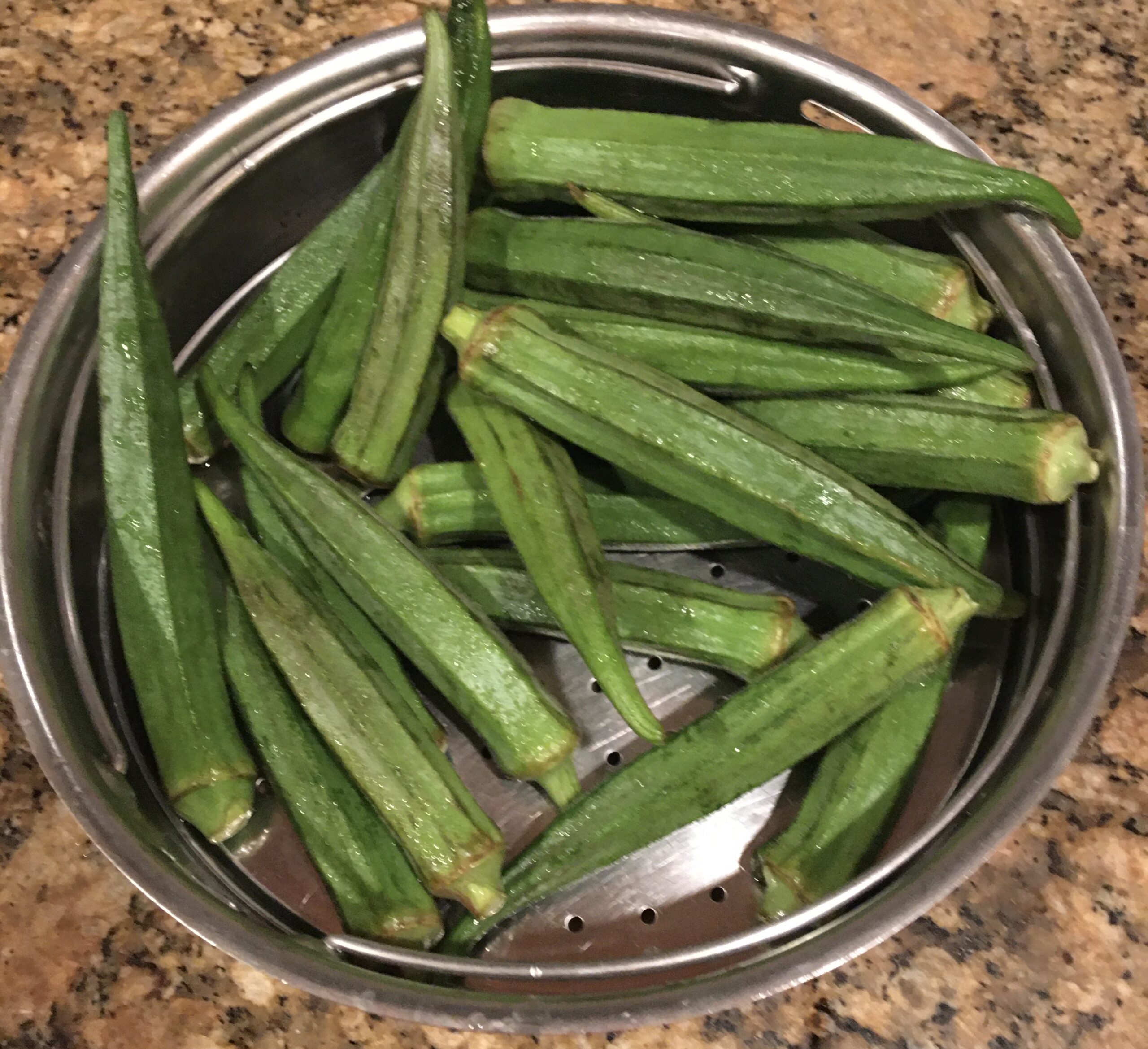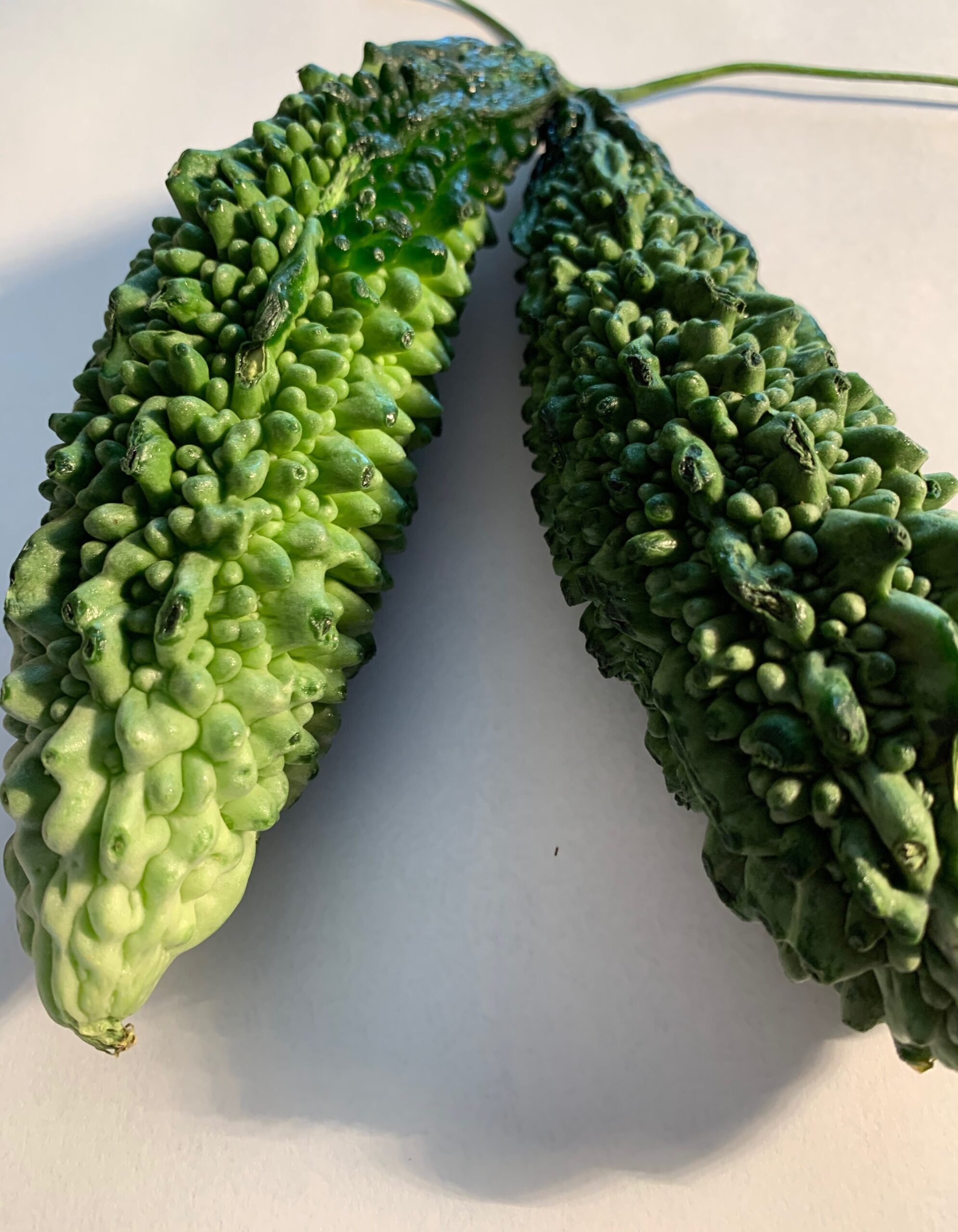Chayote Squash, scientific name ” Sechium edule ” is a perennial vine, also known as Mirliton pear. It has a crunchy texture and a mildly sweet taste comparable to butternut squash or pumpkin. The skin contains a vast amount of nutrients and should be cooked with them. Kootu is a preparation with chickpea or mung lentils and coconut. Soft vegetables like Ash gourd, Pumpkin, Chayote squash, and Zucchini combine well with the cooked lentils and coconut to make a delicious dish.
Buying, and Storing : Select squash of singular color (light green) and small without any bruising or indentation. Use plastic bags to store them in the vegetable crisper draw of the refrigerator. They will last for 10 days to a few weeks. Peel Larger Chayote squash but the tender ones can be eaten raw tossed into salads, or cooked in soups or stews.
https://www.wikihow.com/Select-and-Use-Chokos-(Chayote-Squash)
Growing : Chayote is a vine that produces a flattened pear shaped fruit that tastes like a nutty flavored squash. Vine like stems grow from a tuberous root that can reach up to 50 feet long. Leaves are hairy and resemble maple leaves; male and female flowers are borne on the same vine.Young shoots, the mature fruit and tuber are edible. Yield: Plant 1 vine per household of 4 persons. Plant chayote in loose well drained moisture retentive soil rich in organic matter, in full sun. Soil pH 6-6.8. Planting time is 3-4 weeks after the last frost.
https://harvesttotable.com/how_to_grow_chayote/
History : Chayote squash is also known as alligator pear, Custard marrow, Chow chow, Sayote, vegetable pear, Mirliton, Chistophone and Chokos in Australia. It originated in Central America cultivated by Aztecs and Mayans. European explorers spread the plant to the Caribbean, S. America and Europe. It now plays a part in cuisines and cultures around the world. The largest source of Chayote continues to be Central America including Costa Rica, Mexico, the Dominican Republic and Guatemala.
http://www.aihd.ku.edu/foods/Chayote.html
Nutrition Facts of Chayote Squash (Sechium Edule) 100g raw
| GI= 15 ; GL = 1 | Minerals | Vitamins |
| Energy 19 kcal <1% | Sodium 2 mg <1% | Folates 93mug – 23% |
| Carb 4.51g – 3.5% | Potassium 125 mg – 2.5% | Niacin 0.47mg – 3% |
| Protein 0.82g – 1.5% | Calcium 17mg – 1.7% | Pantothenic acid 0.249mg – 5% |
| Total Fat 0.13g <1% | Iron 0.34mg – 4% | Pyridioxine 0.076mg – 6% |
| Cholesterol 0 mg – 0% | Magnesium 12mg -3% | Riboflavin 0.029mg – 2% |
| Dietary Fiber 1.7g – 4.5% | Manganese 0.189mg – 8% | Thiamin 0.025mg – 2% |
| Phosphorous 18mg – 2.5% | Vitamin A 0IU – 0% | |
| sugars 2.2 g | Selenum 0.2mug <1% | Vitamin C 7.7mg – 13% |
| Zinc 0.74mg – 7% | Vitamin E 0.12mg <1% | |
| Vitamin K 4.1mug – 4% |
Health Benefits of Chayote Squash
- Chayote squash can help with cholesterol control and weight reduction : Being low in calories and rich in fiber, antioxidants , minerals and vitamins this squash is recommended for cholesterol reduction and to lose weight.It works well as a replacement for starchy vegetables for low carb diet as in Keto or Atkin’s
- Chayote squash is a Good source of B complex vitamins like Thiamin, Pyridoxin, Riboflavin and minerals like iron, manganese, phosphorous, zinc and copper. Folate’s presence helps in cell division and DNA synthesis.
- Chayote Squash can help with Cancer prevention: It contains small levels of aglycone flavonoid polyphenolic antioxidants such as Apigenin and Luteolin which help scavenge harmful oxygen-derived free radicals that play a role in cancer and anti-aging.
Spice & Herb Power
- Turmeric powder: 1 tsp. 9 cal contains 3.14% curcumin has potent antibacterial, antiviral, anti-fungal, anti-inflammatory, and immune-modulating properties Curcumin extracts taken daily reduces the levels of LDL cholesterol in just 12 weeks as per a study from Taiwan.
- Mustard seeds: Vitamin E daily – contains 130% of RDA a powerful lipid-soluble antioxidant needed for maintaining the cell membrane of mucosa and skin by protecting it from harmful oxygen-free radicals.
- Green/red chili 6 cal. weight loss some evidence suggests that capsaicin can promote weight loss by reducing appetite and increasing fat burning,(10g) can significantly increase fat burning.
- Coconut: Trans-Zeatine an anti-aging substance that is present in coconut can help with wrinkles and sagging in the neck and arm of the skin.
Method to cook Chayote Squash Kootu
- Cook lentils in a saucepan with water & turmeric powder. ( 20 min.)
- Peel and cut the chayote squash into 1/2″ cubes; rinse & drain in a colander. (4 min.)
- Cook squash with salt and turmeric powder in the microwave. (8 min.)
- Heat the oil in a frying pan. Add mustard seeds, lentils, red chili and curry leaf.
- When mustard seeds splutter, add the cooked squash and lentils.(2 min.)
- Stir until squash & lentils blend together into a semi-solid mixture.
- Garnish with grated coconut & minced green chili. Mix well. ( 6 min.)
Serve Bangalore Baingan Kootu with Quinoa, Rice, Pasta, Pita bread or rolls.
TIPS
Add a few drops of oil to the lentils while cooking, to prevent from bubbling over
The coconut can be fried in 1 tsp. oil & added to give more flavor
Variation: starchy vegetables like green banana, potato or yam add viscosity
Variation : Cook Ash gourd, Yellow pumpkin, Zucchini or frozen Mixed vegetables in a similar manner

